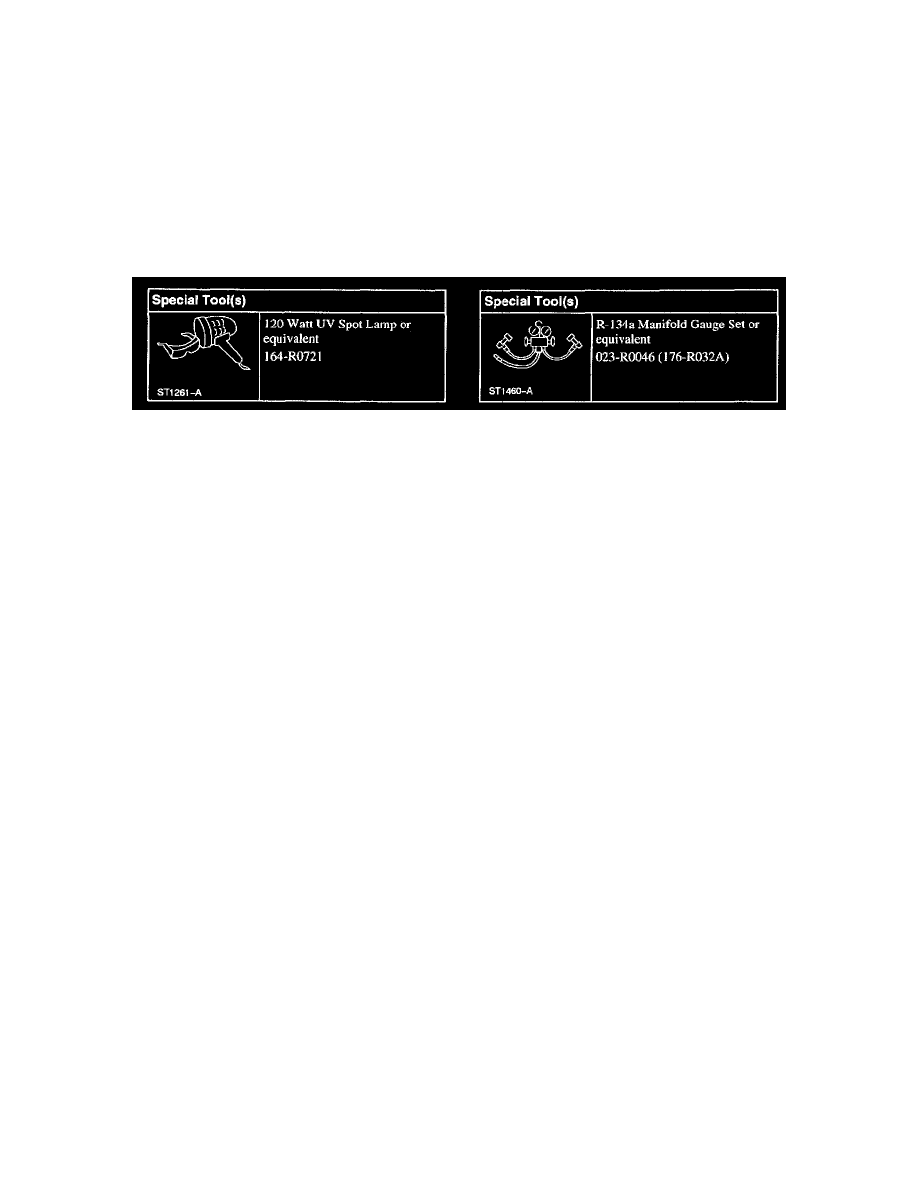Focus ZTS L4-2.0L DOHC VIN 3 (2001)

2. Carry out the leak test.
-
Close the gauge head manual valves.
-
Switch off the service station vacuum pump.
-
Watch the low pressure gauge on the service station. If the gauge reading increases by more than 20 mbar (2 kPa or 0.29 psi), the system is
leaking.
-
If there are leaks, fill the air conditioning system with approx. 300 g of refrigerant and check it using leak testing equipment.
-
If the system is free of leaks, continue with the filling procedure.
NOTE: If an air conditioning system that was filled with refrigerant is being evacuated, then some refrigerant will still be in the refrigerant oil in
the compressor. This residual amount of refrigerant may still evaporate and during the leak test may result in a minor increase on the pressure
gauge (max. two sub-divisions). However, despite this pressure increase the air conditioning system is free from leaks.
Tracer Dye Leak Detection
Special Tool(s)
SPECIAL TOOL(S)
NOTE:
-
Since July 1999 vehicles have a fluorescent tracer dye tablet inserted into the A/C system. If tracer dye is present, there is a green cross on the
suction accumulator.
-
If it is necessary to add tracer dye, use the dye injector. A/C systems require 7.4 ml (0.25 oz) of Fluoro-Light/P Fluorescent Tracer Dye.
-
Some vehicles may have signs of refrigerant oil at the spring lock couplers. This may be caused from the assembly process which applies to the
fittings before installation to aid in assembly. When a spring lock coupler is suspected of leaking, always wipe the fitting clean and verify the leak
with R-134a Automatic Calibration Halogen Leak Detector.
-
The exact location of leaks can be pinpointed by the bright yellow-green glow of the tracer dye. Since more than one leak may exist, always
inspect each component.
1. Check for leaks using a 120 Watt UV Spot Lamp. Always scan all components, fittings and lines of the A/C system.
2. After the leak is found and repaired, remove any traces of dye with a general purpose oil solvent.
3. Verify the repair by operating the system for some minutes and inspecting with the UV lamp again.
